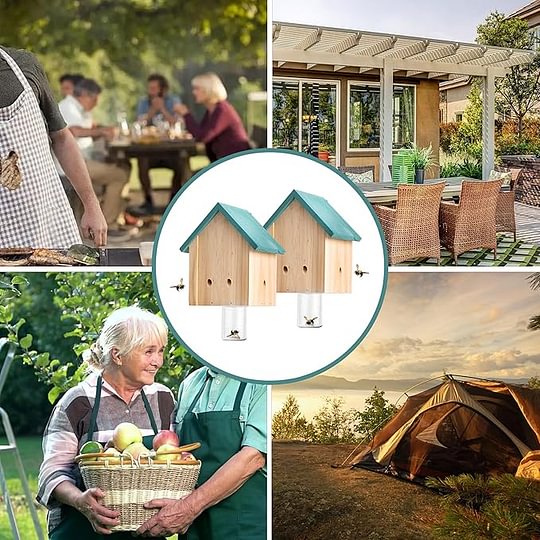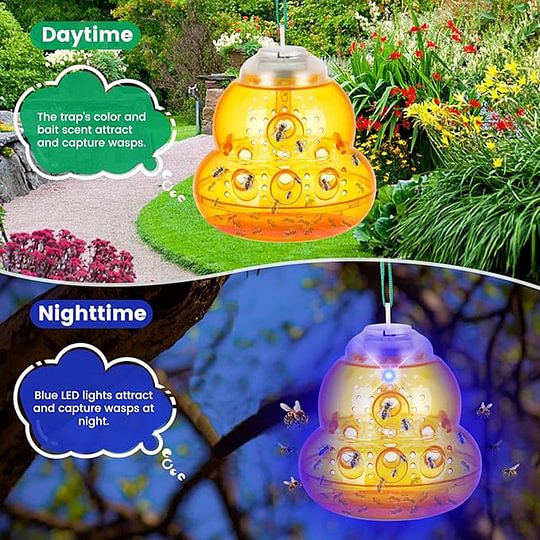Carpenter bees can be a charming sight in the garden, but their destructive habits often make them unwelcome guests. These large, buzzing insects are known for burrowing into wood, causing damage to decks, beams, and furniture. If you're tired of finding holes in your favorite outdoor structures, it's time to take action. Mastering the art of carpenter bee traps can help you manage these pests effectively and protect your property from harm.

Building and using carpenter bee traps is a practical solution that allows you to control their population without resorting to harmful pesticides. Not only are these traps simple to make, but they can also blend seamlessly into your outdoor decor. With a little creativity and some basic materials, you can create an efficient trap that draws in carpenter bees and helps reduce their impact on your home. Let's explore how you can get started with these traps and reclaim your space from these pesky pollinators.
Understanding Carpenter Bees
Carpenter bees are large, solitary insects that play an important role in pollination. They are often mistaken for bumblebees due to their similar size and shape, but unlike bumblebees, carpenter bees have shiny, black abdomens. These bees are known for their habit of boring into wood to create nesting sites, which can lead to significant damage if left unchecked.
These creatures typically emerge in the spring, seeking warm, sunny areas to establish their nests. They prefer untreated, weathered wood such as decks, fences, and eaves. While carpenter bees are generally non-aggressive and unlikely to sting, their nesting habits can be a nuisance for homeowners, as they can weaken structures over time with their burrowing.
Understanding the behavior of carpenter bees is key to managing them effectively. carpenterbeetraps are attracted to specific types of wood and tend to return to the same nesting sites year after year. This knowledge is crucial in developing carpenter bee traps that can effectively reduce their population and protect your property from potential damage.
DIY Carpenter Bee Trap Designs

Creating your own carpenter bee traps can be an effective and satisfying way to manage these pests without resorting to chemical solutions. One popular design involves a simple wooden box utilizing basic materials you may already have on hand. Start by constructing a box with an entrance hole approximately half an inch wide, placed near the top of the trap. Beneath the hole, attach a small collection container filled with soapy water or a sweet solution to lure and capture the bees. This trap can be painted or stained to match your outdoor decor, making it both functional and visually appealing.
Another effective design uses a repurposed plastic bottle. Cut the bottle in half and invert the top half into the bottom half, creating a funnel-like effect. The entrance hole should be placed just above the water level in the bottom half. The bees will be drawn to the sweet scent placed inside the bottle, and once they enter, they will struggle to escape. This design is lightweight, easy to hang, and works well when placed near areas known for carpenter bee activity.
For those looking for a more advanced option, you might consider a multi-chamber trap. Construct a box with several compartments, each featuring its own entrance hole leading to a separate collection container. This design allows for the capture of multiple bees at once and can reduce bee populations more effectively. You can enhance this trap's attractiveness by adding scented baits inside each chamber. Regular maintenance, such as emptying containers and refreshing baits, is essential to ensure continued effectiveness.

Effective Placement and Maintenance
To maximize the effectiveness of your carpenter bee traps, strategic placement is crucial. Position the traps near areas where you have observed carpenter bee activity, such as around wood structures, eaves, or fences. Ideally, traps should be placed at eye level or slightly higher, ensuring they are easily visible to the bees. A good rule of thumb is to install multiple traps in various locations to increase the chances of intercepting bees before they reach their nesting sites.
Regular maintenance is essential for keeping your traps functioning optimally. Check the traps weekly to monitor for captures and remove any dead bees promptly. This not only maintains the hygiene of the trap but also ensures that it continues to attract more bees. If you notice that the traps are becoming full, make sure to empty them and clean them out to prevent any offensive odors.
Additionally, consider the condition of your traps over time. Wooden traps may require periodic maintenance to prevent weathering, while any signs of wear or damage should be addressed immediately. If your traps are losing their effectiveness, it may be time to either reseal the wood or replace the traps entirely. By giving adequate attention to placement and maintenance, you can significantly improve your success in managing carpenter bee populations.
